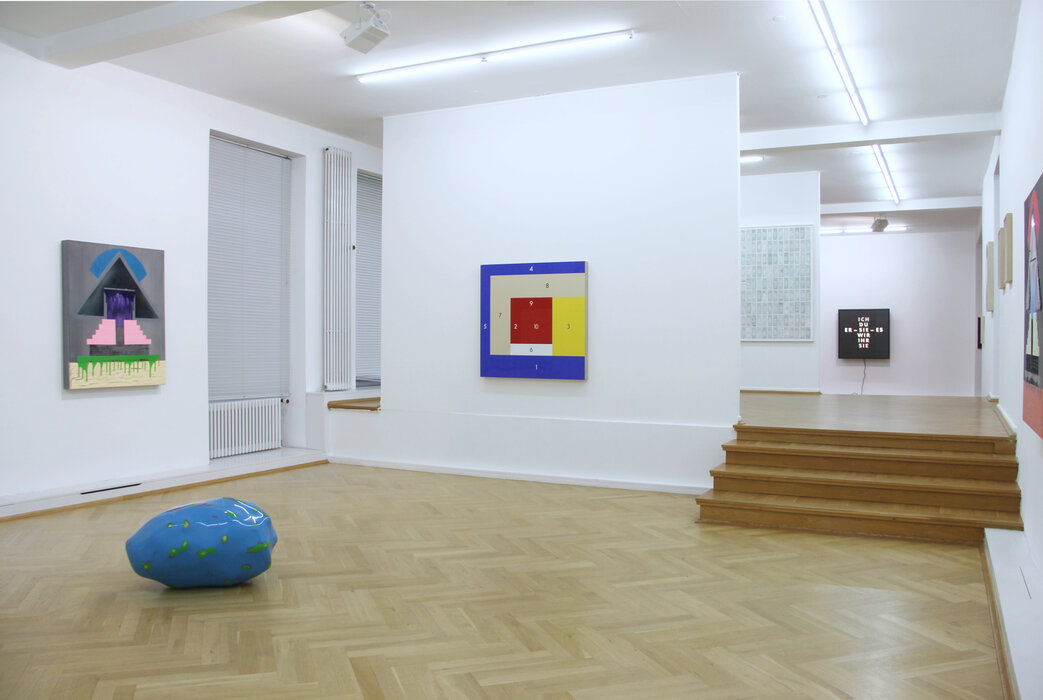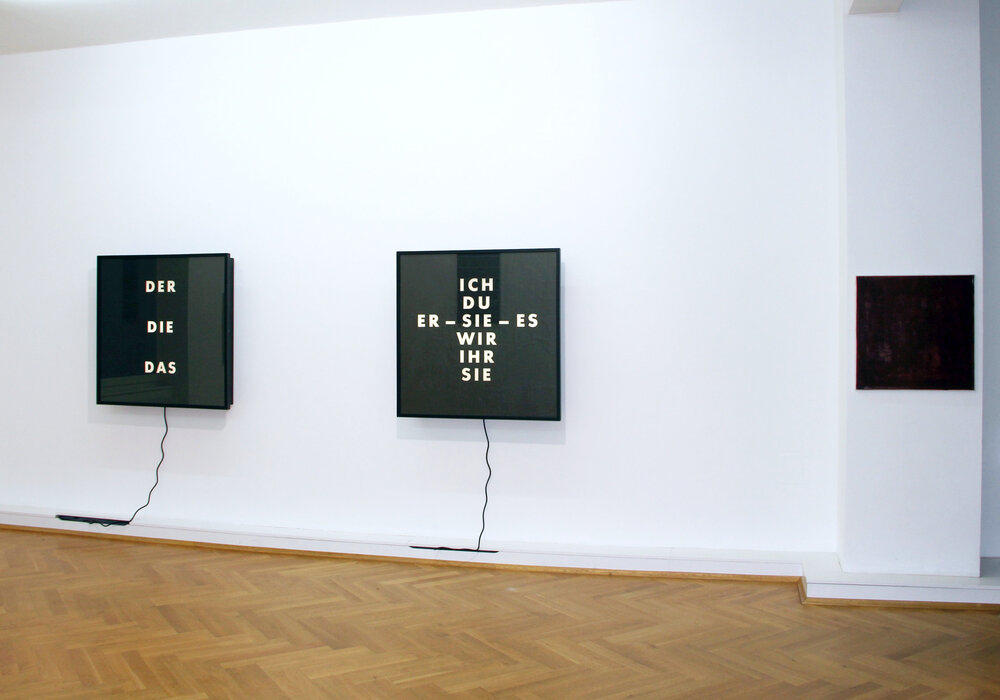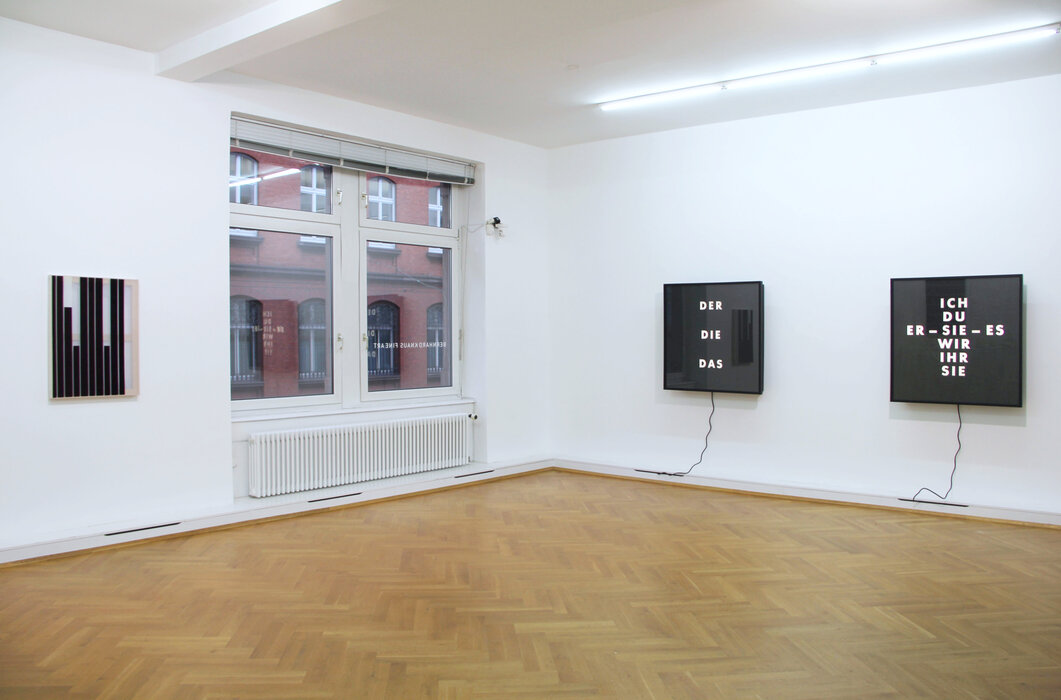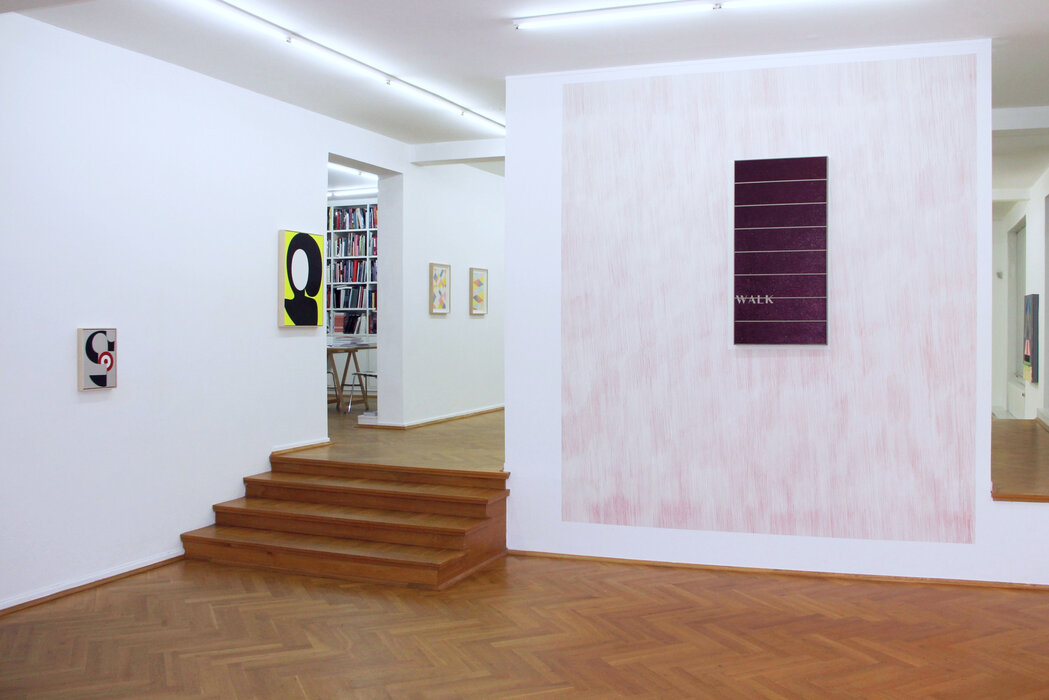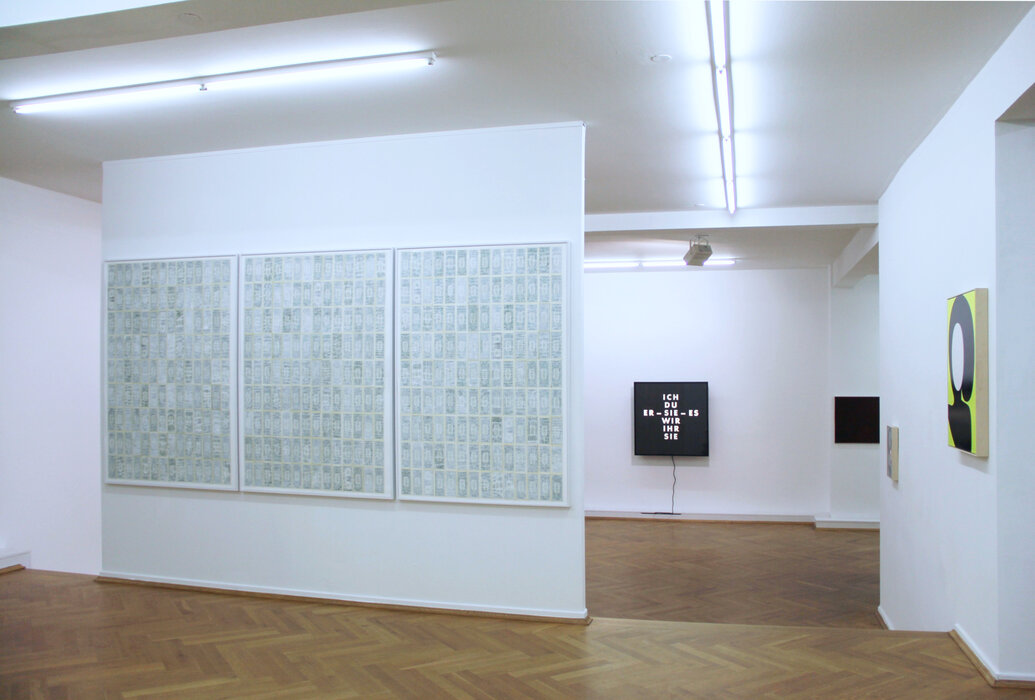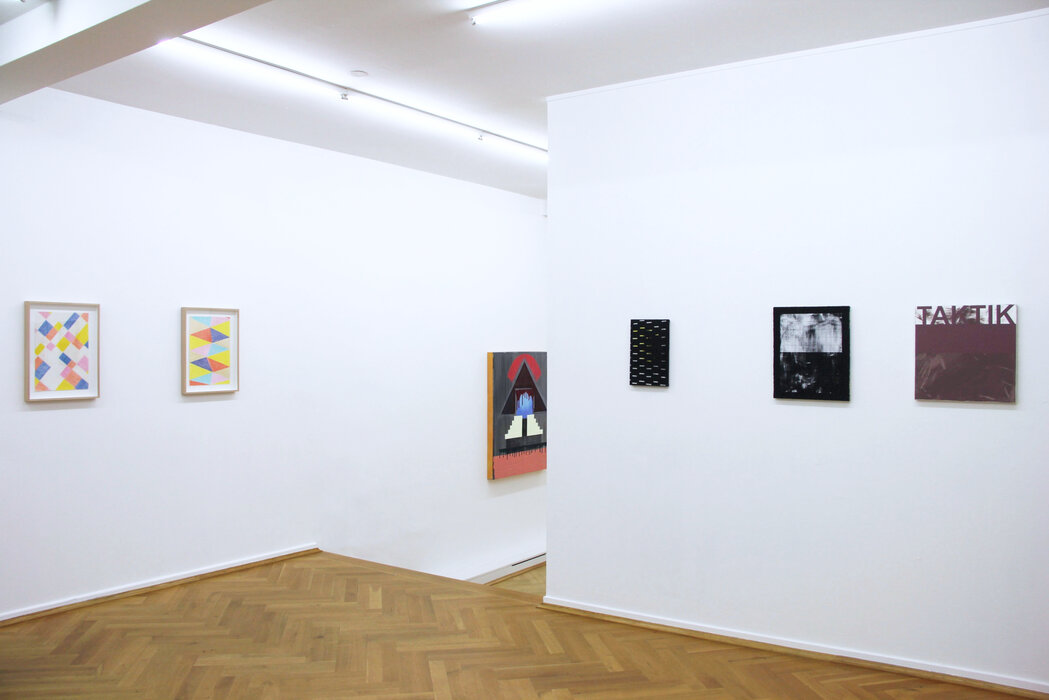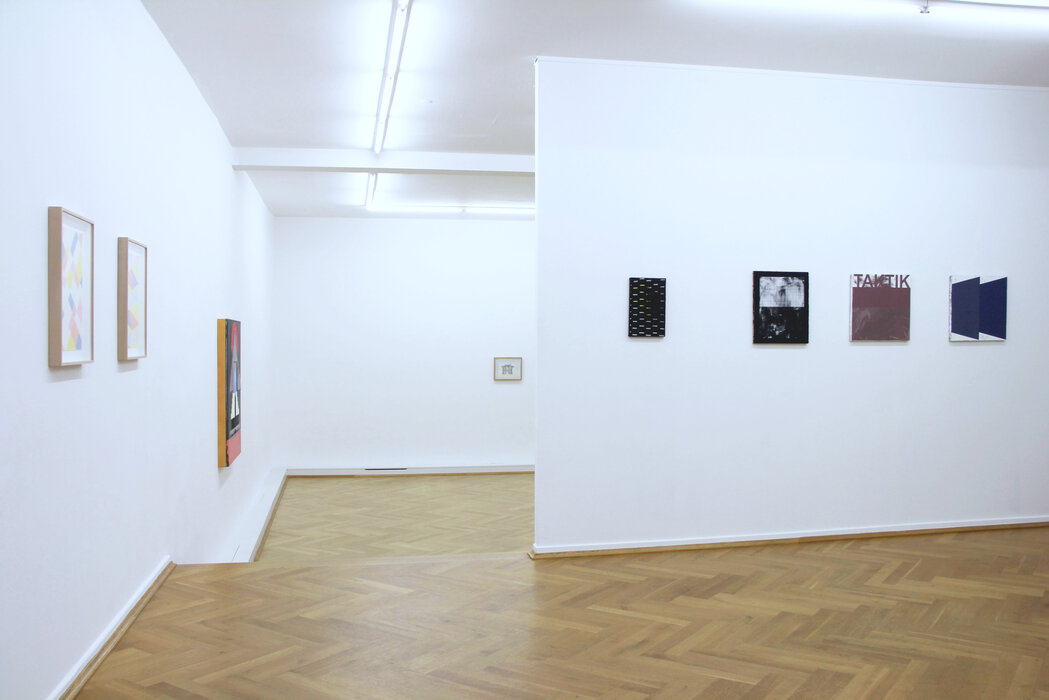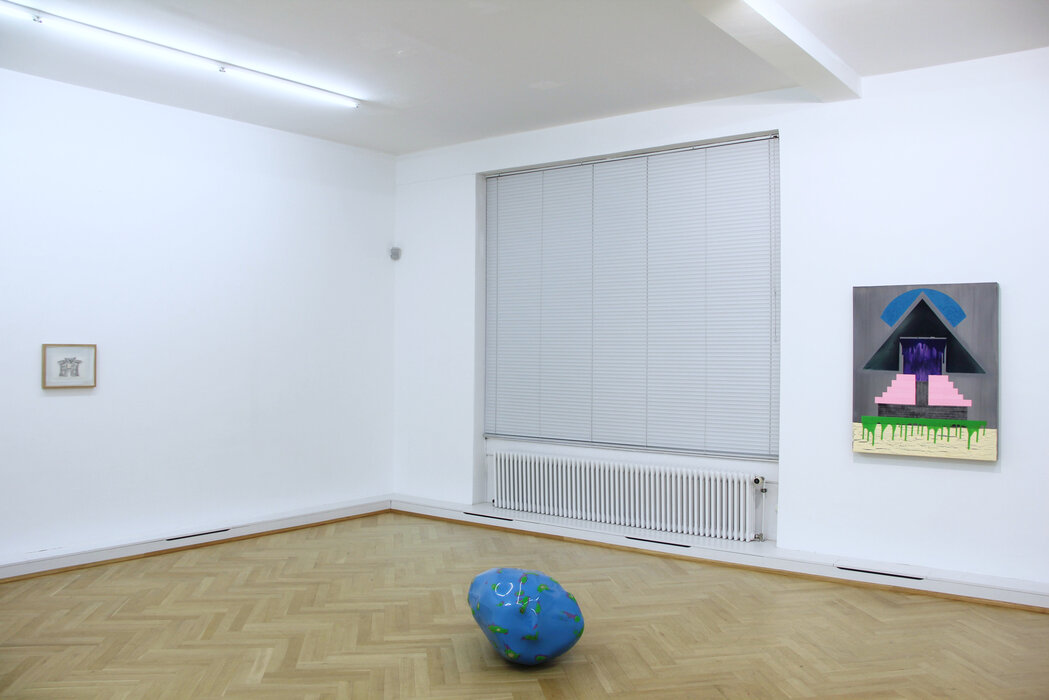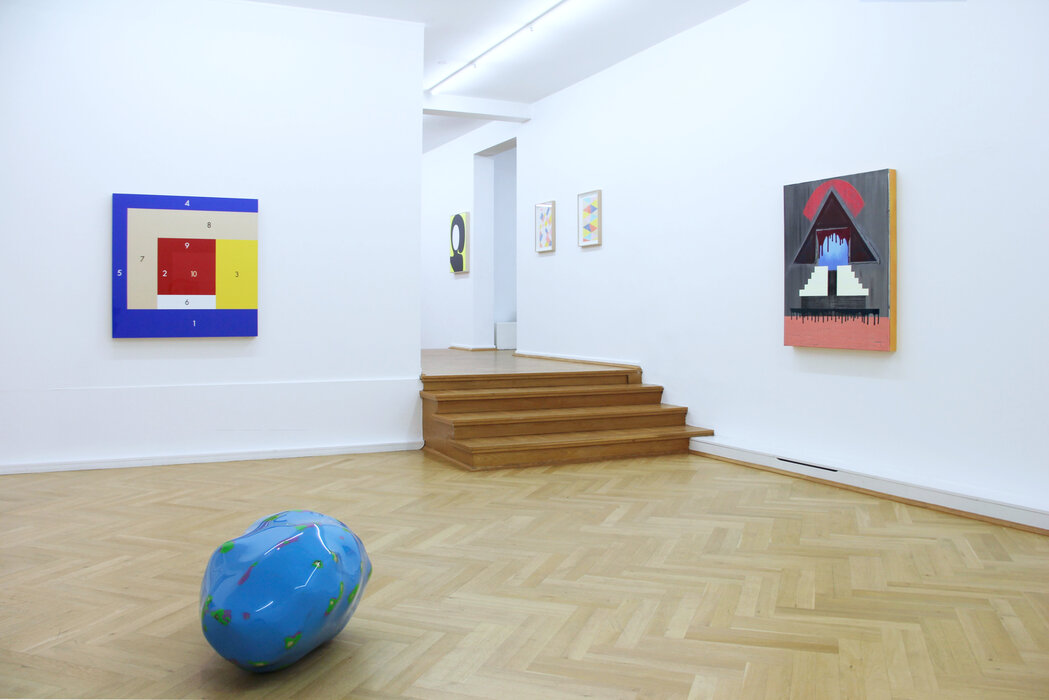Exhibition
visual semiotics
07.11.2019 - 01.02.2020
Opening November 07, 2019, 7 pm
In art, imaginative capacity is both a blessing and a curse. Every image, by virtue of being viewed, becomes a communicator, taps into intellectual spaces or, if perceived in three dimensions, becomes an inimical opposite just waiting to be conquered or which is immediately met with wholehearted rejection. Whether we like it or not, our intellect wants to recognize something, orient itself, make reference to its own experiences – and without orientation we wouldn’t make it through life. Art operates in general in precisely this field of opposing poles. In the exhibition visual semiotics however, the artists quite explicitly address the intelligibility of the artworks, stimulating the senses, so to speak, with apparently legible formations and content. All the images in the exhibition can be considered abstract, yet they are not illusionist in the mode of representation chosen; rather, it is precisely their formal ambiguity that enriches them with possibilities for interpretation. Thomas Locher (born 1956), for example, declines the German pronoun “uns” and presents this in cruciform shape. In another work he uses a seemingly systematic sequence of numbers and thus creates a field of comprehension and miscomprehension. In art, form and color are the ingredients of all depiction and always have been, yet the legibility of an image goes further than that, of course, and has evolved much further in the course of the history of civilization. With the development of technology, our experience of images has naturally also expanded. While stripes, for example, were once simply stripes, now they also represent the possibility of codes. In the case of the paintings by Herbert Hinteregger (born 1970), they can be considered more diversely and more openly, playing the primary role in the relief-like application and the color materials, whereby their staging in the exhibition goes beyond the image and includes the wall, stretching out into the room. In the works by Nadine Fecht (born 1976), meanwhile, from a distance a series of characters appears simply as a grey value, yet simultaneously harbor content for which you need to literally take a closer look. This reflects the way, for example, that billions in debt become impossible to fathom, while small sums quickly become oppressively visible. Wilhelm Mundt (born 1959) is exhibiting one of his “Trashstones”, and by using waste to create gleaming sculptures, he sets a particular tone for civilization. With characters, as with road signs, supposed precision is a convention by arrangement, in order to govern or to demonstrate, and therefore aims to build on trust. Albrecht Schnider’s (born 1958) paintings make use of this circumstance, but are based on freehand, which determined these shapes without signification. Relying on structure to promise orientation and executed with a light touch and careful composition, with shape and color, Karim Noureldin (born 1967) continues a tradition that is anchored in almost all cultures. Hidden symbolism, seemingly deep meanings and a choice of colors that often appears downright apocalyptic are the tools used by Dana Greiner (born 1988) in order to subvert general aesthetic notions, and in doing so makes use of the cultural conditions of uncertainty. Precision and craftsmanship as a prerequisite for art are an old cliché. Nicolas Jasmin (born 1967) transfers her works in the exhibition, executed as surface paintings, to a laser emitter, which “revises” some areas of the images and thus changes the color values. Authorship is thus delegated to technology, and legibility partly surrendered to an external precision rooted in the technological world of industry. Ernst Caramelle (born 1952), lastly, questions illusion and reality in the exhibition, doing so abstractly via surface painting, demonstrating in his images that space is an intellectual convention deriving from the use of color and experience, familiarity and impossibility.
Text: Axel Jablonski
In art, imaginative capacity is both a blessing and a curse. Every image, by virtue of being viewed, becomes a communicator, taps into intellectual spaces or, if perceived in three dimensions, becomes an inimical opposite just waiting to be conquered or which is immediately met with wholehearted rejection. Whether we like it or not, our intellect wants to recognize something, orient itself, make reference to its own experiences – and without orientation we wouldn’t make it through life. Art operates in general in precisely this field of opposing poles. In the exhibition visual semiotics however, the artists quite explicitly address the intelligibility of the artworks, stimulating the senses, so to speak, with apparently legible formations and content. All the images in the exhibition can be considered abstract, yet they are not illusionist in the mode of representation chosen; rather, it is precisely their formal ambiguity that enriches them with possibilities for interpretation. Thomas Locher (born 1956), for example, declines the German pronoun “uns” and presents this in cruciform shape. In another work he uses a seemingly systematic sequence of numbers and thus creates a field of comprehension and miscomprehension. In art, form and color are the ingredients of all depiction and always have been, yet the legibility of an image goes further than that, of course, and has evolved much further in the course of the history of civilization. With the development of technology, our experience of images has naturally also expanded. While stripes, for example, were once simply stripes, now they also represent the possibility of codes. In the case of the paintings by Herbert Hinteregger (born 1970), they can be considered more diversely and more openly, playing the primary role in the relief-like application and the color materials, whereby their staging in the exhibition goes beyond the image and includes the wall, stretching out into the room. In the works by Nadine Fecht (born 1976), meanwhile, from a distance a series of characters appears simply as a grey value, yet simultaneously harbor content for which you need to literally take a closer look. This reflects the way, for example, that billions in debt become impossible to fathom, while small sums quickly become oppressively visible. Wilhelm Mundt (born 1959) is exhibiting one of his “Trashstones”, and by using waste to create gleaming sculptures, he sets a particular tone for civilization. With characters, as with road signs, supposed precision is a convention by arrangement, in order to govern or to demonstrate, and therefore aims to build on trust. Albrecht Schnider’s (born 1958) paintings make use of this circumstance, but are based on freehand, which determined these shapes without signification. Relying on structure to promise orientation and executed with a light touch and careful composition, with shape and color, Karim Noureldin (born 1967) continues a tradition that is anchored in almost all cultures. Hidden symbolism, seemingly deep meanings and a choice of colors that often appears downright apocalyptic are the tools used by Dana Greiner (born 1988) in order to subvert general aesthetic notions, and in doing so makes use of the cultural conditions of uncertainty. Precision and craftsmanship as a prerequisite for art are an old cliché. Nicolas Jasmin (born 1967) transfers her works in the exhibition, executed as surface paintings, to a laser emitter, which “revises” some areas of the images and thus changes the color values. Authorship is thus delegated to technology, and legibility partly surrendered to an external precision rooted in the technological world of industry. Ernst Caramelle (born 1952), lastly, questions illusion and reality in the exhibition, doing so abstractly via surface painting, demonstrating in his images that space is an intellectual convention deriving from the use of color and experience, familiarity and impossibility.
Text: Axel Jablonski
Exhibited works
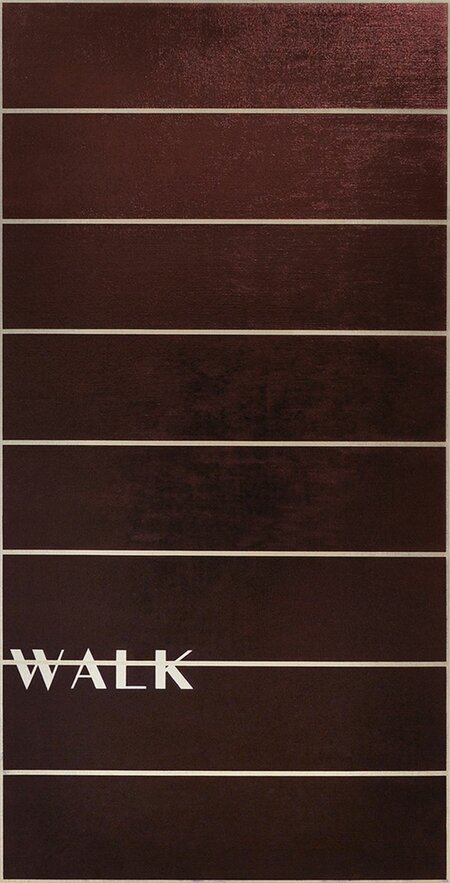
Herbert Hinteregger
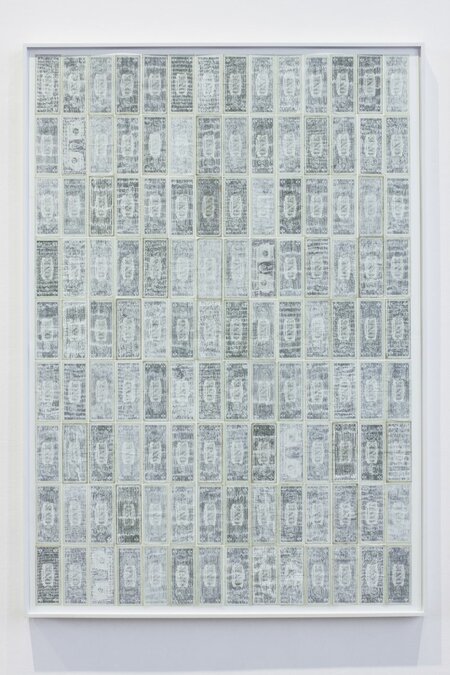
Nadine Fecht
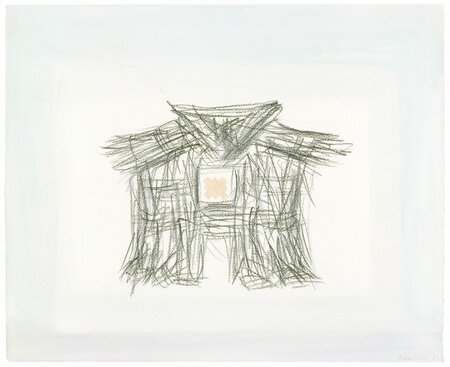
Ernst Caramelle
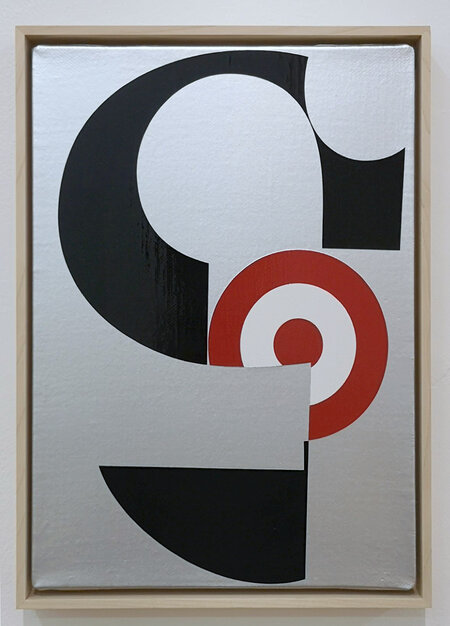
Albrecht Schnider
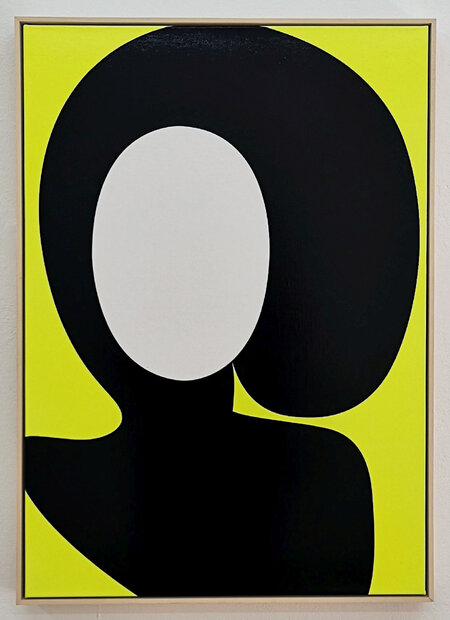
Albrecht Schnider

Nicolas Jasmin
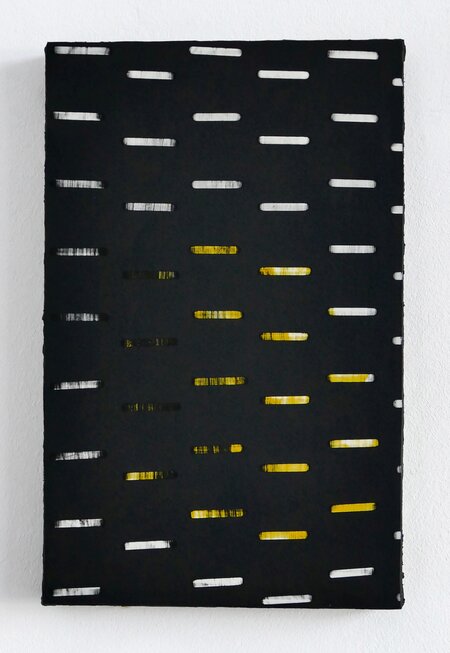
Nicolas Jasmin
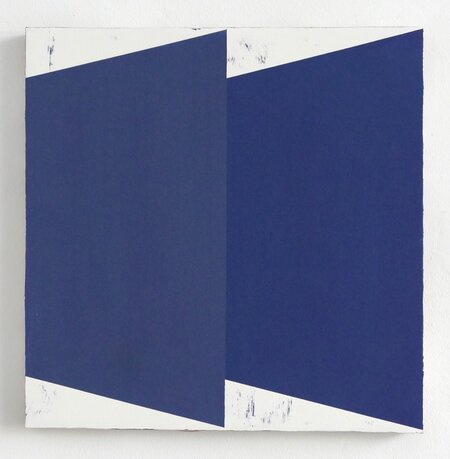
Nicolas Jasmin
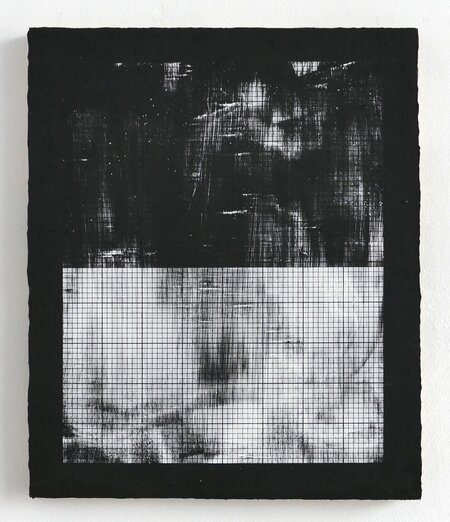
Nicolas Jasmin
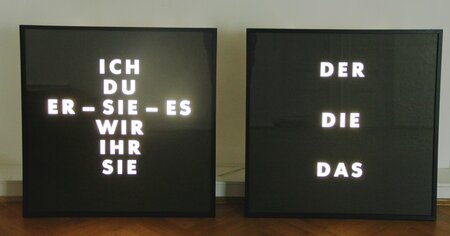
Thomas Locher
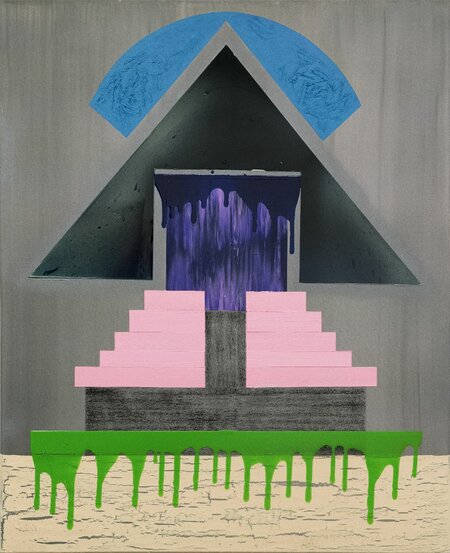
Dana Greiner
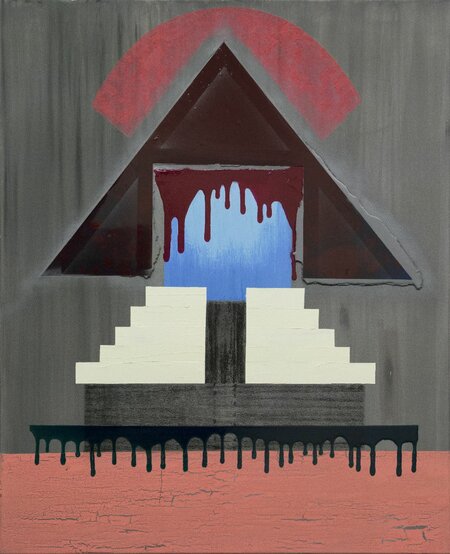
Dana Greiner
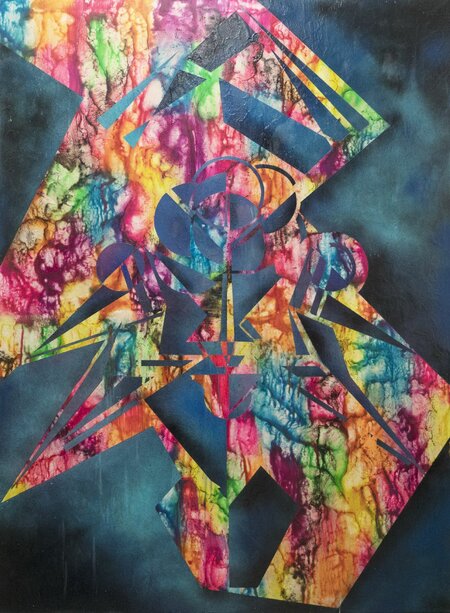
Dana Greiner
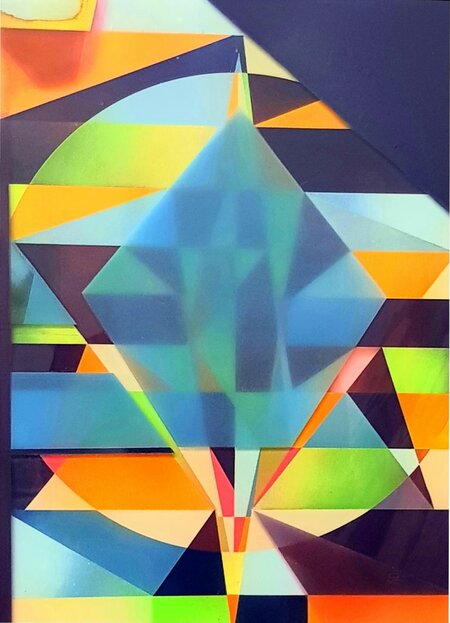
Dana Greiner
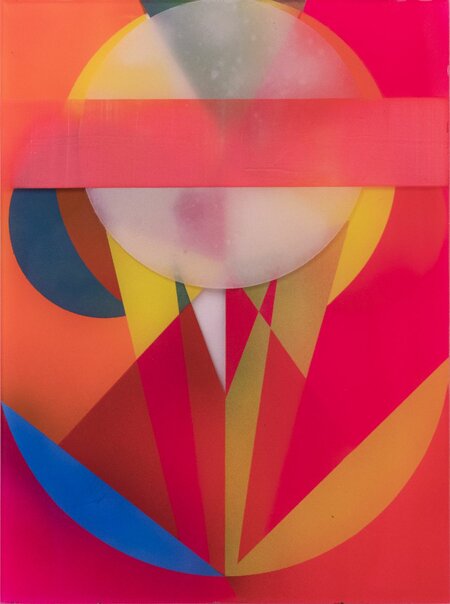
Dana Greiner
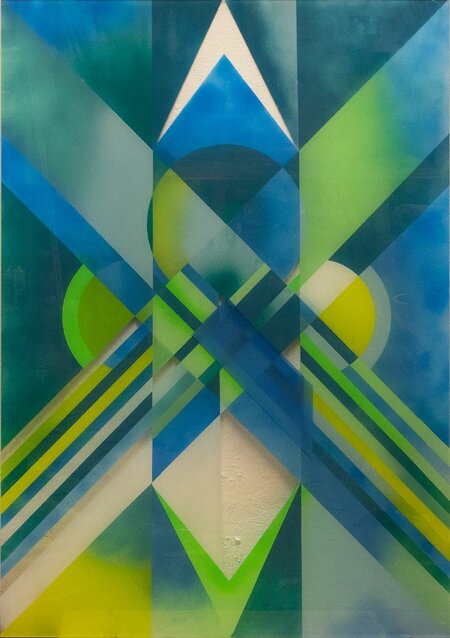
Dana Greiner
